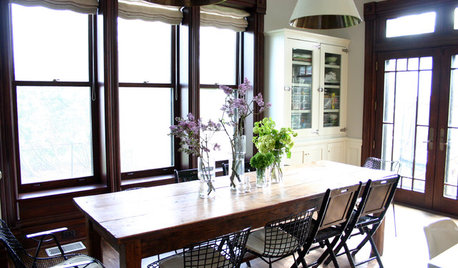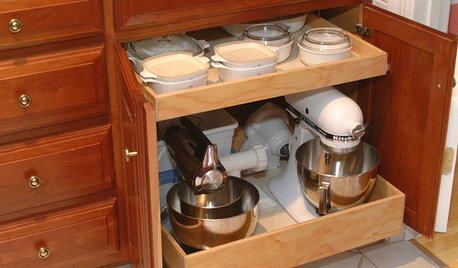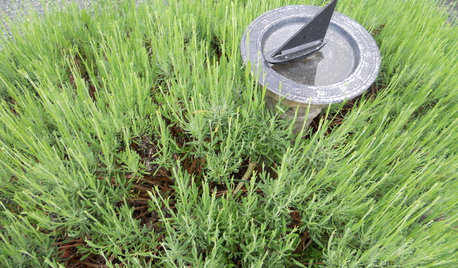Hi Ladies-
I have lurked on this forum for several days now, getting prepared for my first foray into canning. I took the plunge this past weekend. I wanted to ask some questions about the results I got.
Firstly, below is the list of what I canned and the source of the recipe that I used. Yes, I know it was 100 degrees outside but so what? I wanted to try it and I did.
6 pts. Plum Jam
Award winning Preserves
Carolyn Amendt
p.153
6 qts. Tomato sauce
Small Batch Preserving
Ellie Topp an Margaret Howard
p.236
2 pts. Spiced Orange Slices
Small Batch Preserving
Ellie Topp an Margaret Howard
p. 164
7 pts. Peach Jam
Internet Recipe from Recipe Source
n/a
1 pt. Caramelized onions
Small Batch Preserving
Ellie Topp an Margaret Howard
p.178
2 Btls. Seasoned Vinegar
Preserving
Oded Schwartz
p.129
2 Pts. Watermelon Jam
Internet Recipe from Recipe Source
n/a
I have questions about my results. I also have pictures of all of the above but have not figured how to post them.
1.Spiced Orange pickle slices-I followed the directions to the letter. The flavor is delicious but the slices appear to be over processed and not pretty (The recipe told me to boil the oranges for 45 minutes before slicing and processing). Any suggestions that might give me a better looking orange slice?
2.Caramelized onions-This recipe produced an amount less that what was quoted in the book and I had of an inch of head space. The glass sealed(heard the ping), but there appears to be empty space in the glass. Should I be concerned? I threw it in the fridge just to be on the safe side.
3.Watermelon Jam-The watermelon jam used the layering process (Watermelon diced and layered with sugar for 4 hours and then the whole mass was boiled). The recipe told me that that it would take 45-50 minutes to thicken but when that time ended, It was still so watery that I just kept reducing. I cooked it for 1.5 hours and the water just kept oozing from the watermelon. I finally drained the pieces (they resembled little sweet jewels), put them in the jars, filled the jars with the reduced liquid and processed. Is there a trick to keeping the fresh taste of watermelon and having it reduce without weeping water?
4.Peach Jam-This recipe was very straight forward:
4 cups peach slices
5.5 cups sugar
¼ cup lemon juice
1 packet liquid pectin
I doubled this recipe and processed it in pint jars instead of ½ pints(The recipe gave processing times in 1/2 pints and pints). All of my peaches have risen to the top and the set appears to be very soft. I also substituted fresh lemon juice for bottled lemon juice. I understand that this is a problem. The flavor is good, itÂs very sweet, (My dad will enjoy it) Should I just put all of these jars in the fridge?
The recipe said to bring peaches, lemon juice and pectin to a boil, add all of the the sugar at once, bring back to a boil and cook 1 minute. Put in jars, seal and process. I wasnÂt quite sure what I was looking for, the mixture seemed extremely juicy and I let it boil 3.5 minutes more and it reduced a little more. Was this bad?
Lastly, There is a crease in one of the lids, although the lid appears to be sealed and passes the flex text with no problem). I plan to put this jar in fridge, correct? I heard the ping, so I know that it sealed.
5. How does pectin work? Does pectin work on the same principle as cornstarch? By that I mean doe you pour it in and start to see thickening? and that you can expose it to high heat for too long without it breaking? I guess that is what I was looking for.
6.Process-Can fruit is prepared in advance? There is nothing in any of the recipes that indicates you can prepare the fruit the night before and process it the next morning. Is it done? Can the product preparation ever be done the night before in order to add spices and have the flavors meld, and then start the processing process (adding sugar, pectin etc) the next day?
7.Boiling-The recipes say to put the product in the water bath canner and start timing when the water comes to a boil again. When you are processing less than a a full load, a rolling boil tips the jars over. Should I be turning the temp down slightly once that rolling boil is reached to ensure that the glass jars dont tip on their sides?
8. Can artichoke hearts be canned? I have looked and see no recipes for them. I'm assuming that they must be processed in a pressure canner and not a hot water bath canner. Is that correct?
Thanks for any help, comments of observations that you can offer. In the 40 pages of comments I have read on this forum, my confidence found a tremendous boost. I thank you all!!













readinglady
readinglady
Related Discussions
First Time This Season --- had the canner out!
Q
First Time Using a Pressure Canner. Have Questions.
Q
First Time Canner - Having Pressure Issues with Old Stove
Q
Long time listener, first time caller...floor plan review
Q
thecurious1Original Author
thecurious1Original Author
mellyofthesouth
zabby17
mellyofthesouth
readinglady
Linda_Lou
thecurious1Original Author
mellyofthesouth
Linda_Lou
zabby17
thecurious1Original Author
mellyofthesouth
thecurious1Original Author
Linda_Lou
zabby17
dgkritch
thecurious1Original Author
annie1992
zabby17